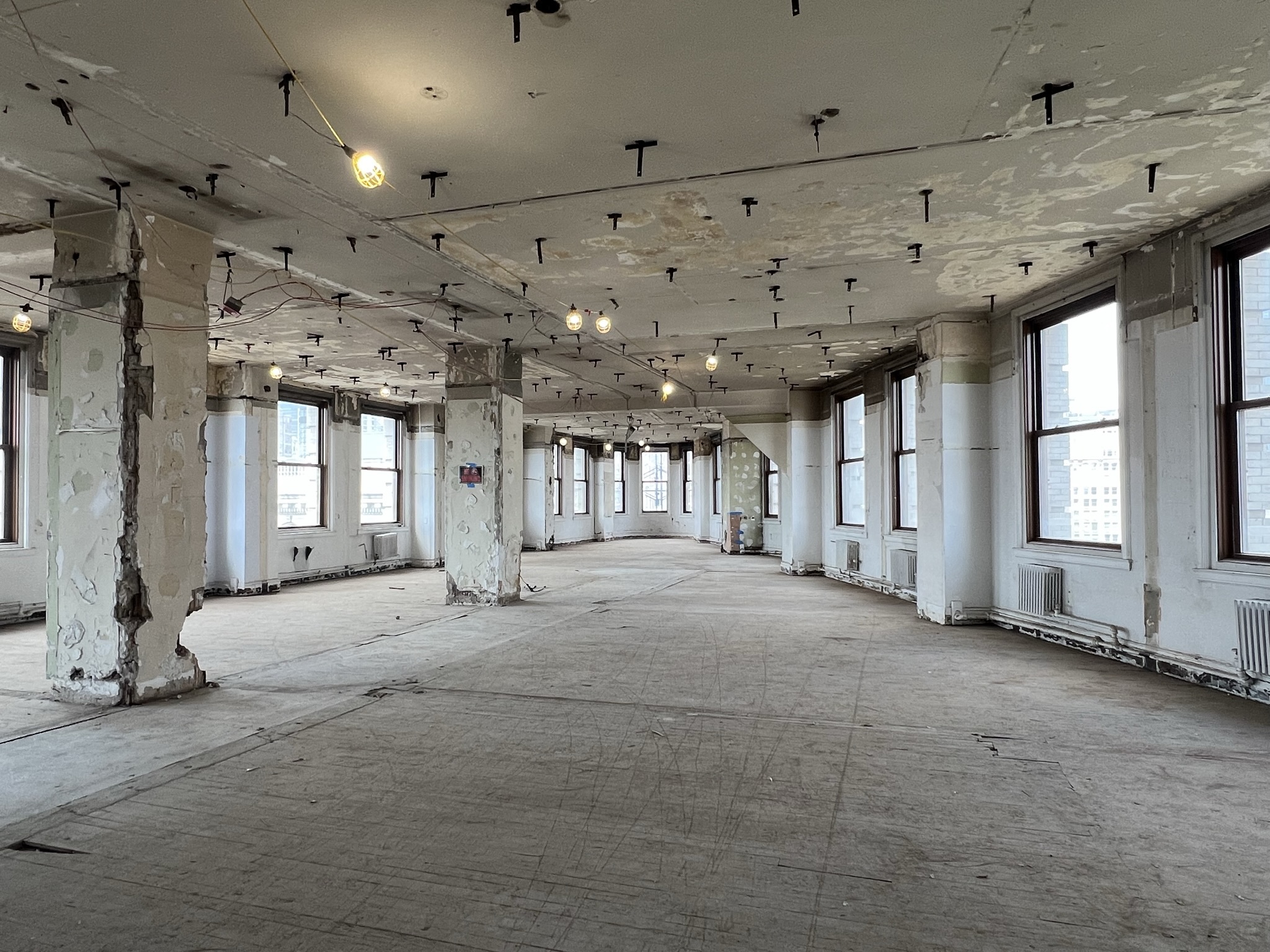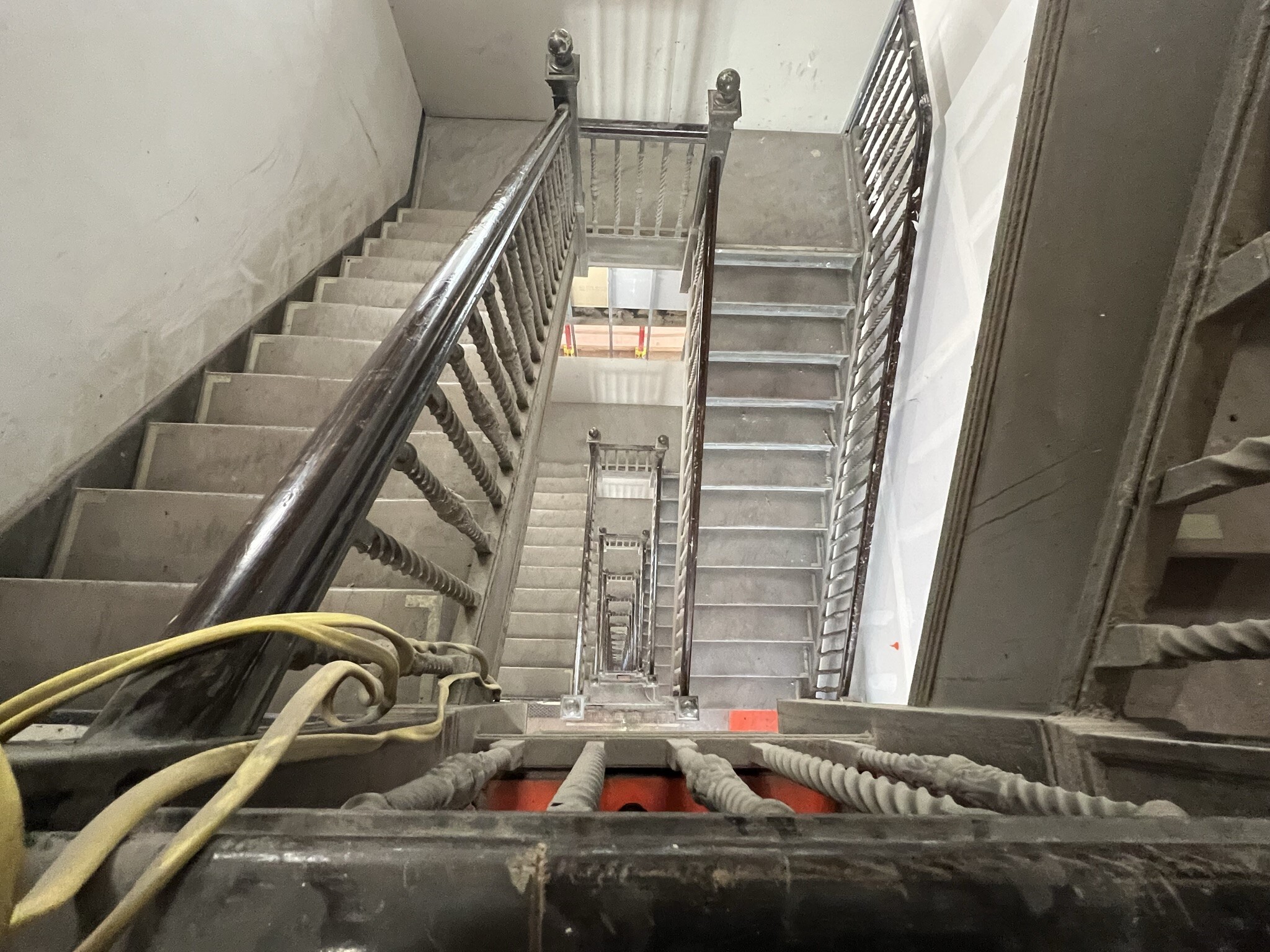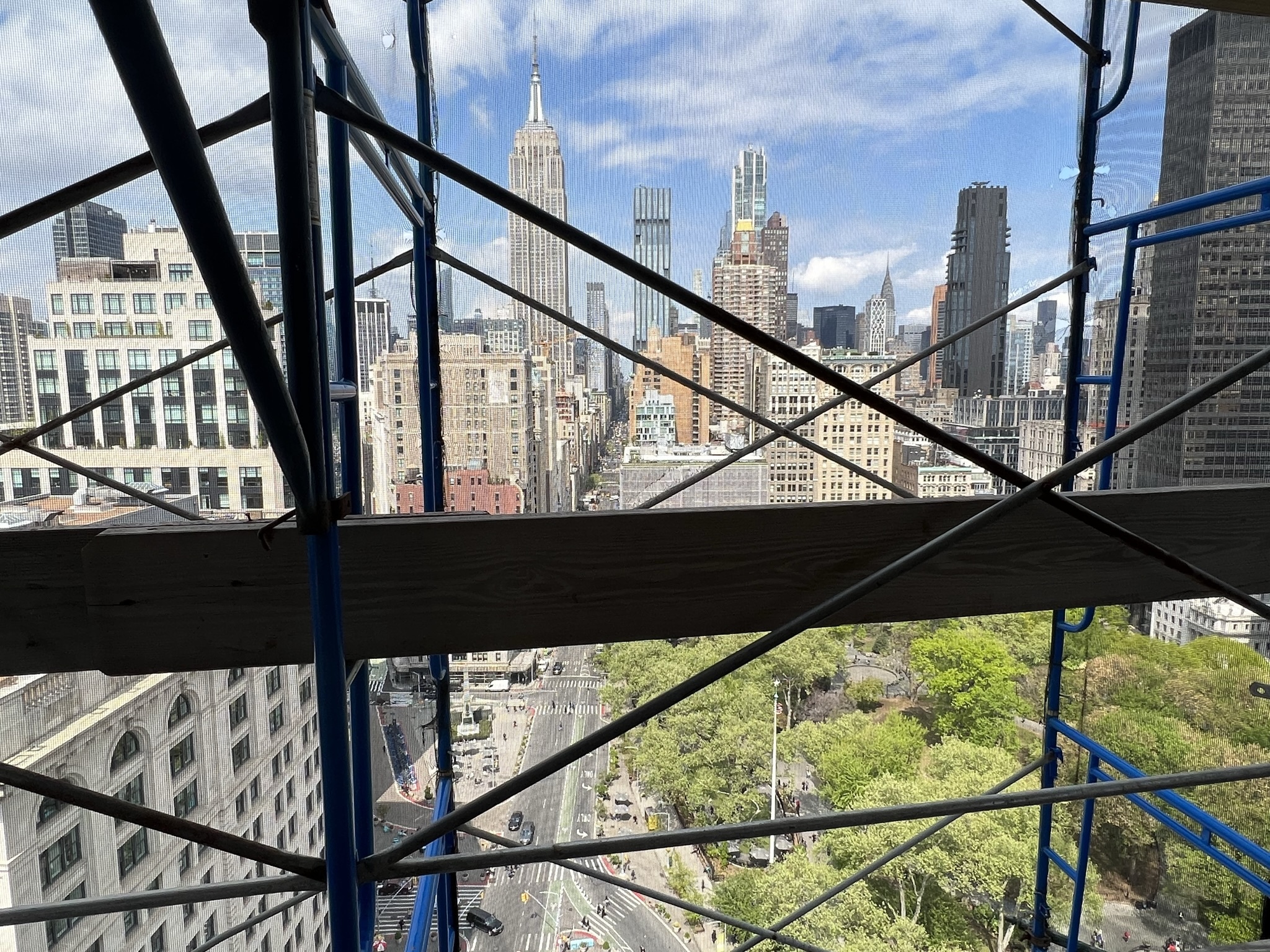The twists and turns in the drama surrounding the fate of Manhattan’s Flatiron Building have grabbed global attention ahead of a second public auction Tuesday of the famed triangular-shaped landmark. But there's a big catch for any potential bidder.
Behind the romantic notion of the famed property featured on postcards, in movies such as “Spider-Man” and “Godzilla,” and a must-see for many tourists, the building that opened in 1902 also comes with this burden: the new owner may well have to spend an estimated $100 million in upgrades.
On a recent weekday, construction and demolition work could be seen and heard in different parts of the building clad in netting and scaffolding inside and out. The smell of things being burned as part of the project wafted in the lobby from the basement. Upstairs, some floors had their dropped ceilings removed. Drywall was removed from some columns to expose the original steel-frame skeleton of one of New York’s first skyscrapers, and one of its first to feature a frame made of steel.
Dust covered the original staircase and other areas of the building at 175 Fifth Ave. at the intersection of Fifth Avenue and Broadway.

“There's a lot of interior core work that has to be done before we can even begin to design what the spaces are going to look like,” Jane Gural-Senders, executive director and principal at GFP Real Estate, a part owner and the manager of the building, said on a tour for CoStar News. “What’s shown on paper isn't necessarily what's shown in reality. In other words, what is this building worth? ... The reality is, it's worth less maybe because it's a shell. … You're talking about $100 million worth of basic work that hasn't been completed.”
GFP, with its partners, own a 75% stake in the building in interests that were acquired since 1997, according to court documents. Nathan Silverstein owns the remaining 25% after he inherited the stake from his father, Gural-Senders said.
Second Auction
The second public auction of the 255,000-square-foot building, scheduled Tuesday, comes after Jacob Garlick, managing partner of Reston, Virginia-based Abraham Trust, came out as the surprise outside winner with a $190 million bid in the first auction. But Garlick ended up failing to make a 10% down payment within 48 hours of the sale, and the building’s majority owners, represented by GFP Chairman Jeff Gural in the first auction, declined to exercise the second highest-bid option to buy the property at $189.5 million.

"If it wasn’t an iconic building, I would have stopped long ago,” Jeff Gural told CoStar at the first auction. “I really thought that it wasn’t worth anywhere near that but since we are only bidding on 25%, I felt I could overpay for 25%. ... It's a beautiful building. ... [But it] needs $100 million of upgrades. It’s a lot.”
The majority owners, citing "fraud," have sued Garlick and Abraham Trust, seeking the down payment as well as attorney fees, punitive damages and expenses tied with both the first and upcoming second auctions, according to the court documents.

These auctions were scheduled in the first place after lawsuits arising from various disputes between the majority owners and Silverstein over renovations, leasing plans, and even physically dividing up the building. A New York state Supreme Court judge earlier this year approved the public auction sale.
The building was designated a landmark by the NYC Landmarks Preservation Commission in 1966, saying the building evokes “a special character and a poetic quality.” The building has sat vacant since Macmillan Publishers, which had occupied the entire tower, moved out in 2019 in its relocation downtown.
That opened the door to make the century-plus-old building compliant with modern fire safety code.
New Systems
“This is a 100-year-old building that was grandfathered into a lot of stuff,” Grual-Senders said. “And now since nobody's here … we now have to be compliant and make it ready for the new tenants to come in.”
The work that’s being done includes setting up the heating and air-conditioning system and knocking out the existing sole historic stairway to build two new ones, she said.
“There's no building in New York this size that can have only one stairway,” she said, adding “How would you get out" in case of an emergency? "That’s a big issue.”

The building’s six elevator cabs, after being built with a water hydraulic system that “would take a long time” to ride, were also recently remodeled decades after a renovation in the late 1980s to be “fully electric,” said Sunny Atis, the building’s superintendent.
“It’s time for this building,” Atis, who’s worked at the property for 35 years, with nine more years to go before he retires, told CoStar News. “This is a city landmark [and] a national landmark. We should just do it justice.”

Because of the delay and forced government shutdown of construction work early in the pandemic, the overhaul work only began in earnest in the past year with the exception of some emergency facade repairs, Gural-Senders said. The limestone and terra cotta building’s facade work is expected to be done this year with the external black netting and scaffolding removed, she said. That will be welcome news for tourists who regularly photograph the building.
The building owners aren’t the only ones doing the work. On the ground floor, T-Mobile, the only retail tenant that remains, is also closed for renovation.

While the inside of the building for now looks far from appealing, it’s not lacking in its potential promise for developers who were interested in the second auction and have come to tour the sunlight-drenched structure.
It's not just looking at the elegant building, but looking out from the famous structure at the city that's evolved around it, that has appealed to prospective buyers who walked through the building.
“They loved the views from here,” said Gural-Senders. “They looked around. This is smack in the middle of two major roadways.”
